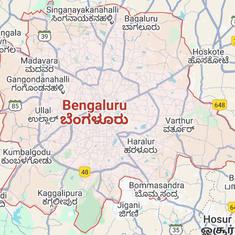The Bharatiya Janata Party-led National Democratic Alliance must brace itself for some tough questions in the second half of the budget session, starting Monday. Already, the opposition has rallied its forces and the Congress plans to bring a censure motion against the government in the Rajya Sabha. The Centre stands on trial for its actions in Uttarakhand, where President’s rule was declared last month.
The Uttarakhand decision came close on the heels of similar developments in Arunachal Pradesh, where an insurrection in the state government led to the imposition of President’s rule. The opposition now accuses the NDA government attacking the federal structure of the Constitution and upsetting the delicate balance of power between the Centre and the states. These charges were ballasted last week, after the Uttarakhand High Court overturned the order imposing President’s rule in Uttarakhand. Though the Supreme Court has since stayed the High Court order, it has done so “more on propriety than legality”.
The NDA will need all its political agility to defend itself against these charges. What lies at stake is this government’s credibility.
Article 356
Article 356, which empowers the president to dismiss a state government “on receipt of report from the Governor of the State or otherwise”, is an emergency measure with a chequered past. Originally meant to be applied “in case of failure of constitutional machinery in State”, it has been used liberally by parties in power at the Centre and eager to expand their sphere of influence in the states. In 1959, the Congress-ruled Centre cited “law and order” problems in Kerala as a reason for imposing President’s rule, and in 1976, it claimed corruption in Tamil Nadu. Between 1975 and 1979, it was invoked 21 times, between 1980 and 1987, 17 times.
These cavalier ways were checked somewhat by the Supreme Court judgment in SR Bommai versus Union of India, 1994. The court clarified that the President’s proclamation was not immune from judicial review. It also said that the majority of an elected government would have be determined by a floor test.
The Centre must now satisfactorily answer a couple of questions. Did the situation in Uttarakhand amount to a breakdown in the constitutional machinery of the state? Does its decision to proclaim President’s rule pass the Bommai test?
Ferment in Uttarakhand
The state was thrown into a ferment on March 18, after the Congress government led by Chief Minister Harish Rawat faced rebellion from at least nine party MLAs. They aligned with 27 BJP legislators and appealed to Uttarakhand Governor KK Paul to dismiss the the state government. The governor ordered a floor fest for Rawat but, a day before it was to take place, president’s rule was declared in the state, based on the recommendations of a cabinet note from the Union government.
The Centre put forward a number of reasons for its decision. First, it alleged irregularities in the way the Appropriation Bill had been pushed through the state assembly. Second, it claimed that a government that had lost its majority was “unconstitutional” and “immoral”. Finally, it said it was prompted by a “sting video” produced by one of the rebel MLAs. The footage apparently showed Rawat offering bribes to win back the rebels.
That did not shield it from the strictures of the Uttarakhand High Court, which claimed the Centre was looking with a “magnifying glass” for reasons to impose president’s rule on the states. It also claimed the governor’s report on the situation in the state did not tally with the cabinet note. The Centre, said the two-judge bench, had misled the court as well as the president. Staying the High Court order, the Supreme Court merely said President’s rule could not be reversed in such haste, and that the Uttarakhand court had not provided a written order.
A defence
The legal questions may be left to the courts but the NDA must also mount a credible political defence of itself in Parliament. It will need to prove that it did not use a constitutional provision as a weapon in party skirmishes. It must show that its decision was based on more lofty considerations of governance.
This government has often said it is committed to the principle of cooperative federalism and to empowering the states. Its commitment will now be tested.










